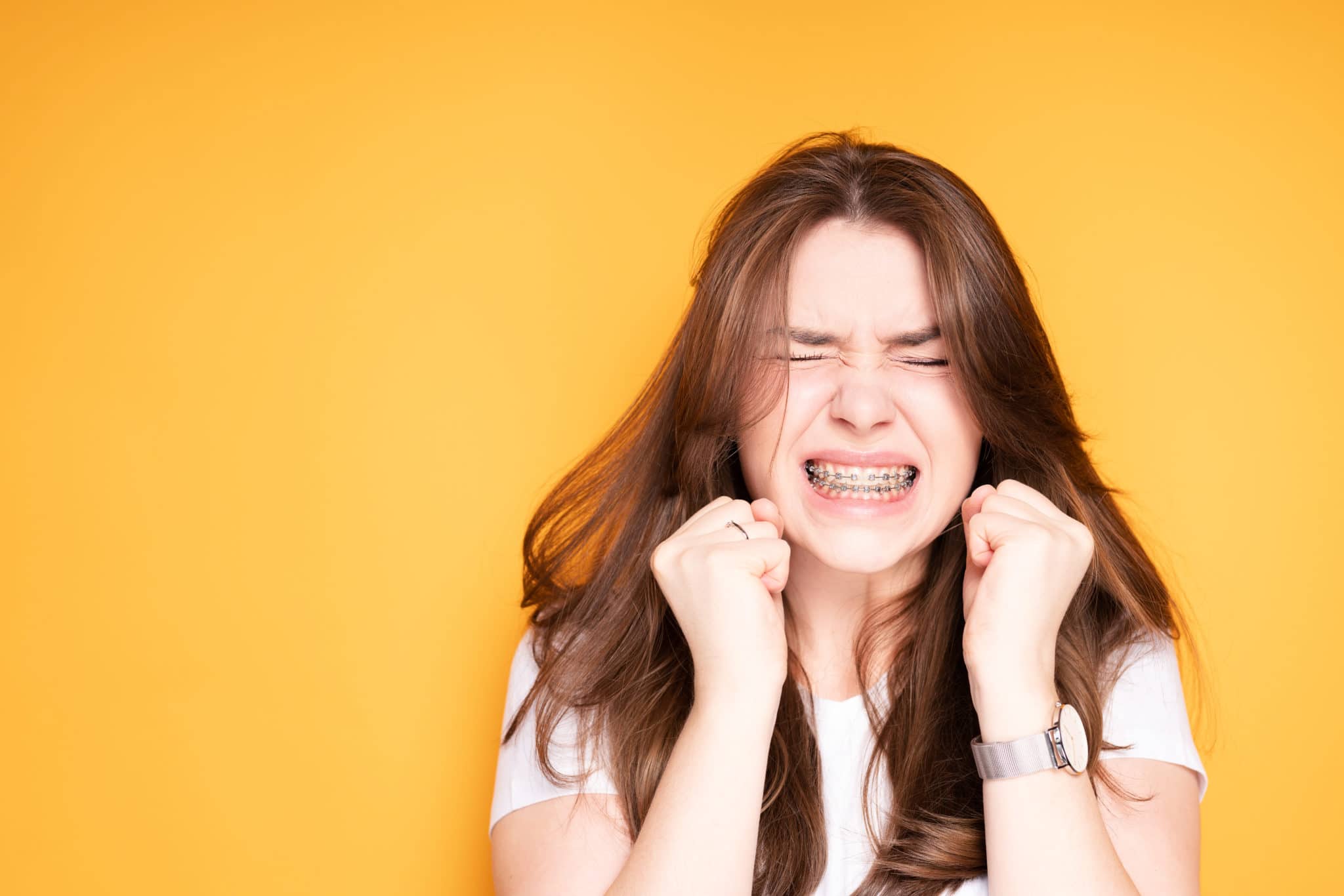Can braces cause TMJ? That’s the question that sometimes patients and even other dentists frequently ask me.
After all, some patients come in and say…everything was going fine and then I had orthodontic treatment—my teeth look great but now my jaw hurts.
Not good.
But is that really the cause? In this article we will discuss the if braces or Invisalign can cause jaw pain.
First things first, What is TMJ Disorder?
TMJ stands for the temporomandibular joints. That sounds really technical but its simply the hinge of how the lower jaw opens and closes.
Let’s keep things simple.
When you talk about TMJ, most people are referring to the disorder.
TMJ disorder is when the jaw movements are out of ideal harmony. Plain and simple. When the jaw is moving out of harmony, it creates muscle tension in the head and neck.
The muscle tension can cause migraines and headaches, as well as a number of other potential issues. Common symptoms can in include:
- Headaches
- Ear pain
- Muscle tension
- Fatigue when eating
- Jaw popping
- Teeth clenching
- Teeth grinding
- Lock jaw
- Facial pain
- Depression
How does TMJ Disorder occur?
That’s a bit of a loaded question. The reason is because it can happen for many reasons. But all the reasons lead to the most common root of the problem–There is a disruption between how the lower jaw is opening and closing against the upper jaw. Some common problems that cause this disruption in harmony are:
- Some teeth are contacting with more force than others
- Some teeth are tipped in so they are unlevel
- The front teeth close so tightly that the pressure forces the jaw into a backward position
- Only some of the back teeth close together and the front teeth do not touch
- There was trauma or growth abnormalities that affect the position of the TMJ when the jaw closes
- The position of the joint has changed due to inflammation, arthritis, or other degenerative changes
Notice how I didn’t say that braces cause TMJ or that Invisalign causes jaw pain. But did you notice something? Both Invisalign and braces can indirectly cause many of those same changes—more on that later. First, lets talk about why TMJ disorder causes pain.
So Why does TMJ Disorder cause Pain and Headaches?

When there is an imbalance of pressure when the jaw is closing, it causes a number of different issues that begin to snowball.
For a moment, I want you to think of the jaw like a hammock. If you were to lay in the center of a hammock, its balanced. It’s peaceful and relaxing right? But what if you laid off center? Suddenly its not so comfortable. There’s constant stress to counterbalance the uneven pressure of the hammock.
If you look at the lower jaw on an X-ray, it looks a lot like a hammock for the teeth. Therefore, it functions the same way.
The lower jaw must close together with balance—ideally in all directions. If its forced off center in any direction, it causes the muscles and TMJs being to suffer strain trying to counterbalance the pressure.
The muscles and TMJs become fatigued. And that’s what begins to trigger jarring pain.
You probably know that if you had a good workout at the gym, you’d be marginally sore. But what if you worked out all day, every day, even after you were already sore. That would become a different type of fatigue. It would feel more like damage than exercise. That’s essentially what happens to the muscles of the head and neck when they are constantly strained. And that’s why the fatigue can be so progressive and painful.
Do Braces Cause TMJ, or Do Braces Fix TMJ?
Now we get back to the question at hand. Do Braces cause TMJ? And this is how I want you to look at it. It’s not that braces cause or cure TMJ by their mere use, it all depends on the position that the teeth are moved into.
Sometimes the teeth are moved and the jaw functions in the exact same position, just with straighter teeth. From a jaw perspective, that will make no difference in pain or comfort either way.
But sometimes when the teeth are moved, it also causes the jaw to open and close at a position that is different than before.
That can be good if it moves to a more comfortable jaw position, and it can be bad if it moves the jaw into a less comfortable position. It all comes down to the position that is created.
So does Invisalign or braces cause TMJ or do they cure TMJ?
It can do both. Only if the position the jaw functions in changes.
When the alignment of the teeth changes the position of the jaw, it can cause symptoms of TMJ disorder if it creates uneven pressure on the jaw. However, before you go running from your orthodontist, you should know it can also improve symptoms of TMJ if it allows the jaw to function in a more relaxed position.
Here’s how I want you to think of the concept. Think of the lower jaw like a door and the upper jaw like a doorframe. A door opens and closes in a door frame right?
It’s the same with the jaw. The lower jaw fits within the top jaw.
Now imagine that you had a door with a crooked door frame. You hire a contractor who aligns the doorframe. The doorframe is aligned.
Great.
But now you notice the top of the doorframe is slightly tighter than it was before. So what happens? You can still close the door, but now you have to close it with more force because there’s pressure that wasn’t there before.
That’s what sometimes happens with the jaw. Aligned is good, but sometimes it causes more pressure when things are evened out into a new position if there isn’t enough space.
Here’s the good news. If you develop TMJ from braces or Invisalign, usually the solution is to readjust them with Invisalign or braces. Braces and Invisalign, can both cause and correct TMJ disorder.
The key is for the healthcare provider to understand what needs to be corrected and what went wrong in the first place. It’s a matter of fitting the bottom jaw into the top jaw with proper space and balance.


